How to Raise Prices – Put Aside Your Fears
Pricing increase is the most direct path to immediate growth. It adds new revenue, raises profitability, and typically requires no major investment. Executives love it and always have it high-up on their regular team meetings. If this is the case, why is it still so difficult for many organizations to raise prices in today’s inflationary environment?
The Problem
Following the status quo is safe. Even the boldest executives are fearful of customer defection due to pricing increases. That is why so many companies shy away from raising prices even when they are not monetizing the full value they generate for their customers.
Based on our experience, most companies miss out on 10 percent of gross margin across the pricing value chain. In fact, untapped profits should haunt executives, just as much as the possibility of customer defection if they were to raise prices.

With this in mind, what does it take to make the right pricing decisions? Organizations that succeed in raising prices have daring executives who are willing to make calculated risks, but they also make proper use of pricing tools. Indeed, gathering the right market-based evidence gives companies the confidence and the customer justification necessary to raise their prices.
The Approach
Pricing changes require four critical elements:
1. Determine logically defendable marketing pricing
Long-standing customer relationships typically equate to discounts. However, do not forget that businesses are rational decision makers. In most business-to-business settings, there are significant costs related to switching suppliers. Therefore, cost-plus pricing models paired with loyalty discounts fail to consider the actual value-add of your products and services. Instead, apply more dynamic strategies like value-based or switching cost-based pricing.
2. Demystify customer defection
Putting a number to the dreaded possibility of “customer defection” can help quell fear and spur pricing action. Do not be afraid of conducting experiments with small, low-risk customers to understand volume sensitivities to pricing changes.
3. Talk to customers (anonymously) before taking pricing action
Direct customer feedback is imperative to align the organization before any pricing initiative. Using third party vendors or surveys to gauge the price sensitivity of customers, former customers, or customers in a related industry is an effective, low-cost, and low-risk tool.
4. Build the right argument for negotiations
Creating a robust repository of arguments, tactics, and visuals to take into price negotiations with customers is imperative for capturing value. These materials are critical in equipping an organization with the justification necessary for realizing higher prices.
Case Study: Leading Medical Device Component Supplier
We recently worked with a leading component supplier for medical device companies. With manufacturing capacity maxed out, our client sought growth through pricing in an industry where 5% year-to-year discounts are the norm. Despite this challenge, we helped our client take price increases to their customers by applying the above principles:
1) Determine logically defendable market pricing
Transition from cost-based pricing to switching-cost based pricing.
We helped our client determine the point at which it made no financial sense for their customers to switch suppliers. Even for an offering with limited market differentiation, companies often forget that there is a switching cost to changing suppliers. Despite our client’s challenges in producing meaningful product advantage vis-à-vis its top competitors, the engineering integration and the trust that it has with customers do create value. Therefore, despite a lack of unique product offerings, we helped our client develop defendable pricing based on its level of entrenchment with key customers as shown below.

2) Demystify customer defection
The silver lining of addition by subtraction.
In the case of our client, we built sensitivity models to assess the likelihood of customer defection. Our analysis revealed that customers due for the largest price increases (those who were most likely to defect) were also the least profitable. In our worst-case scenario model, even though revenue declined, gross margin impact was net positive, and the fear of customer defection became less acute for an organization that is focused on gross profit growth.
3) Talk to customers (anonymously) before taking pricing action.
Primary market research on 30+ procurement professionals who deal with our client and its competitors.
A survey of over 30 procurement individuals in medical devices revealed that they were unlikely to seriously consider another supplier if price increases were no more than 5-10%, as it simply was not worth the hassle due to switching costs.
4) Refine negotiation and value capture tactics.
Negotiation preparation and anticipation of counterpoints.
We built a price negotiation calendar in tune with our customers’ fiscal year end, preempting budget cycles and removing “wrong time” from the list of customer excuses for not accepting higher prices. We also prepared for negotiations with a repository of pre-populated materials and data to justify increases.
Over the course of our year-long engagement, our client drove over 5% in pricing increases that fell directly into profits. Further, our client established a new set of pricing capabilities and processes that can continuously improve its strategies.
Ultimately, instituting price increases does not have to be a leap of faith. You can de-risk the possibility of customer defection, minimize the downside impact, and generate immediate profit increases through a structured, evidence-backed approach.



